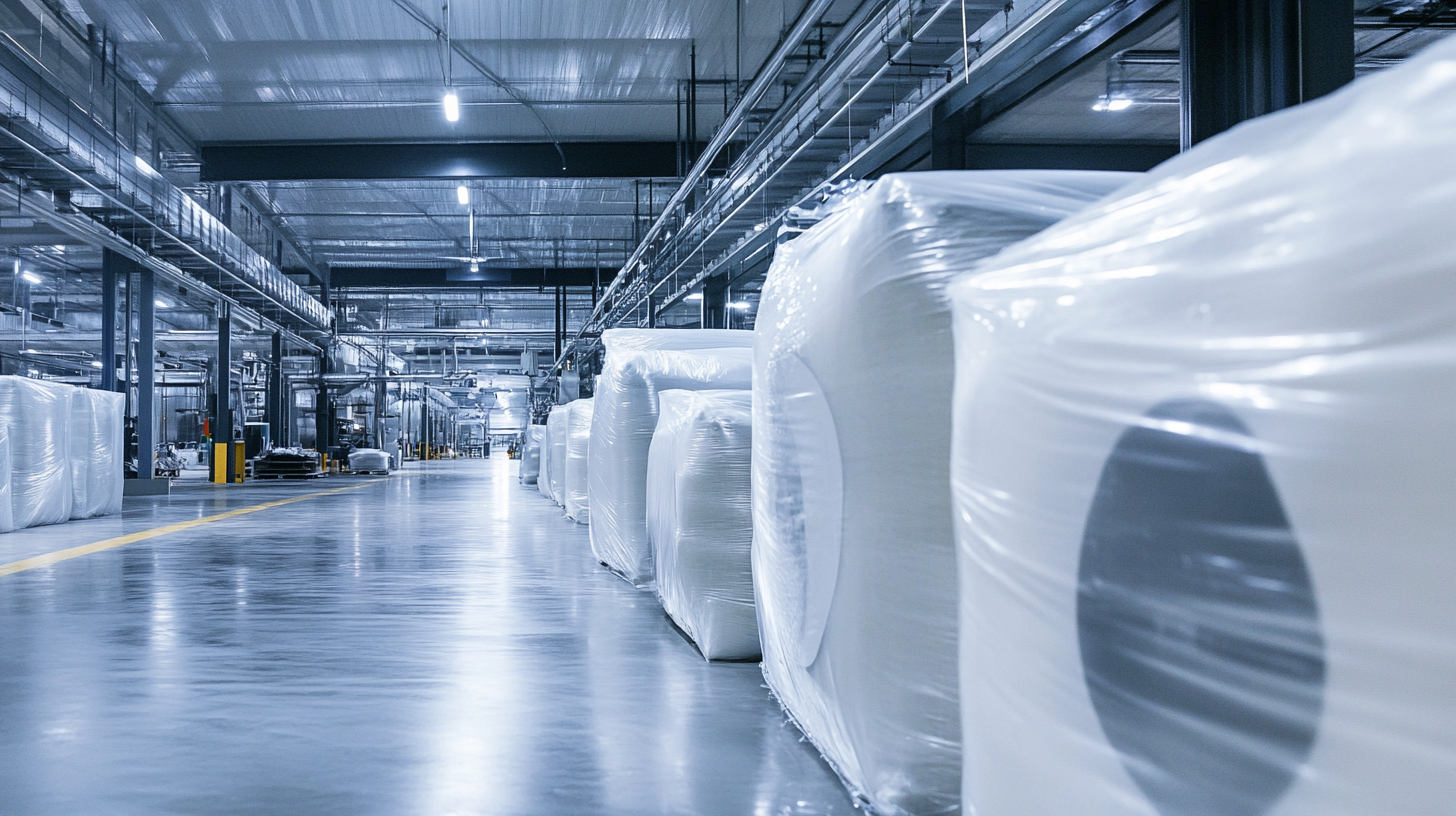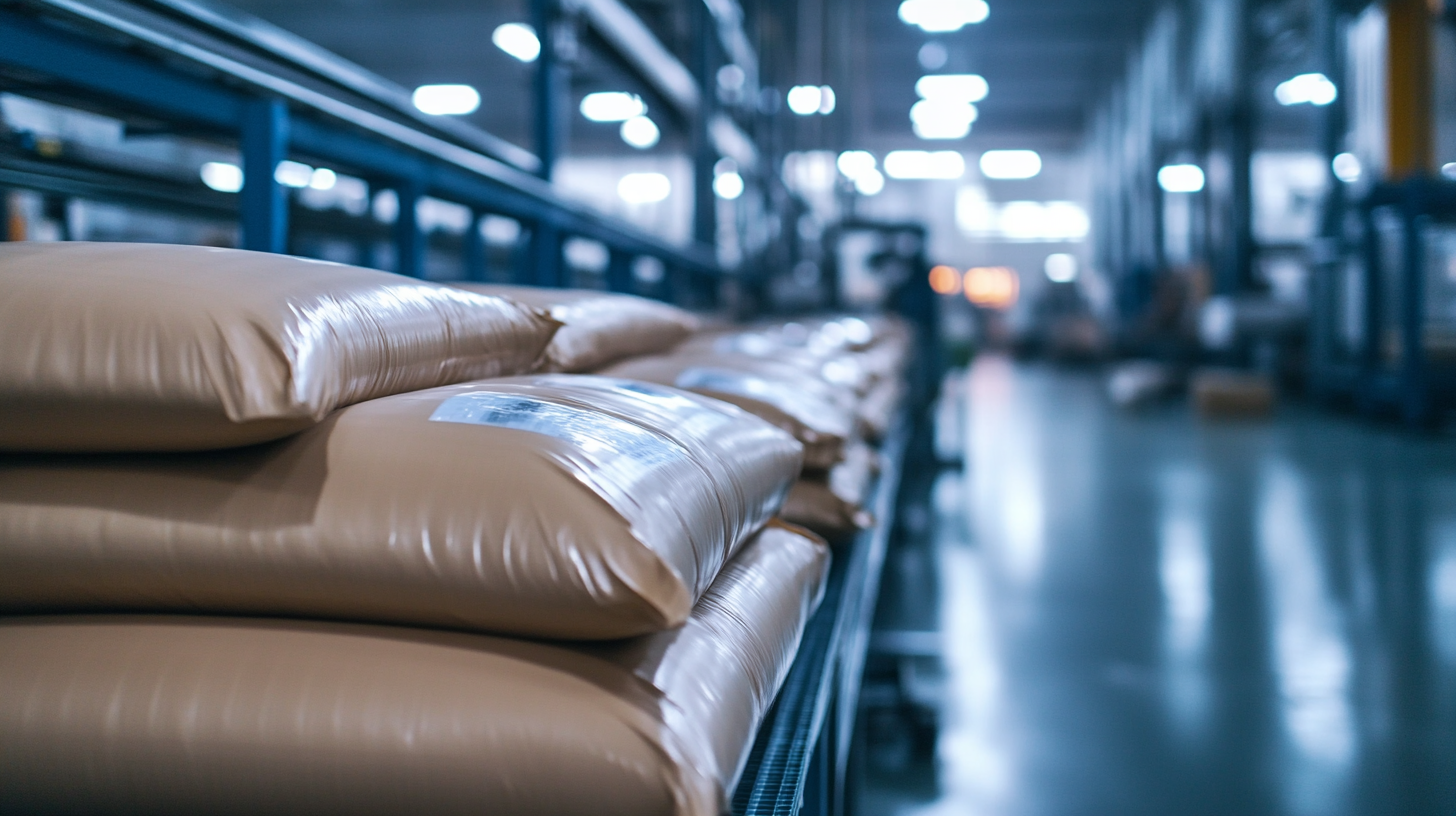As the world increasingly turns its focus toward sustainability, the role of packaging in promoting eco-friendly practices cannot be overlooked. One such innovation making waves in the industry is the Printed Composite Bag, which merges functionality with environmental responsibility. These bags not only serve as a versatile solution for various products but also enhance brand visibility through customizable printing options. However, with innovation comes the need for effective maintenance strategies and cost management, which play a crucial role in ensuring the long-term viability of these bags. This blog will delve into the emerging trends in the maintenance of Printed Composite Bags, exploring techniques that enhance their durability and performance while simultaneously addressing cost-effectiveness. By focusing on these key aspects, we aim to shed light on how businesses can leverage printed composite bags as a sustainable packaging solution, paving the way for a greener future.

Emerging technologies are reshaping the production of printed composite bags, ushering in a new era of efficiency and sustainability. According to a report by Smithers Pira, the global market for flexible packaging, which includes composite bags, is projected to reach $250 billion by 2024. This growth is fueled by advancements in printing technology, such as digital printing and eco-friendly inks, allowing manufacturers to produce high-quality graphics with reduced waste. Digital printing, in particular, enables short runs and customization, minimizing overproduction and its associated costs.
Moreover, innovations in material science are contributing to the development of more sustainable composite bags. For example, research published in "Packaging Technology and Science" highlights the use of biodegradable polymers and recycled materials in bag production. These materials not only decrease environmental impact but also align with the shifting preferences of consumers toward eco-conscious packaging solutions. The introduction of technologies like nanotechnology in barrier films enhances the longevity and performance of these bags, further reducing the frequency of replacement and maintenance.
As the industry navigates the complexities of sustainability, advancements such as automation and advanced analytics are streamlining production processes, improving cost-effectiveness. A recent report from Technavio indicates that integrating smart manufacturing technologies can enhance productivity by up to 30%. This not only drives down operational costs but also positions printed composite bags as a practical choice for businesses aiming for both ecological responsibility and economic viability.

In the realm of composite bag production, enhancing durability and longevity has become a critical focus area for manufacturers aiming to meet both market demands and sustainability goals. According to a recent industry report by Smithers Pira, the global market for sustainable packaging is projected to reach $500 billion by 2027, with composite bags increasingly recognized for their lightweight yet strong design. By integrating advanced materials like biodegradable polymers and reinforcing fibers, manufacturers can significantly improve the mechanical properties of these bags, making them resistant to wear and tear while maintaining a lower environmental impact.
Furthermore, implementing innovative manufacturing techniques such as electrospinning can enhance the durability of composite bags. This process involves creating ultra-fine fibers that not only increase the strength of the bags but also offer moisture and chemical resistance. A report from Technavio indicates that adopting such techniques can lead to a 30% increase in product lifespan, thereby reducing the frequency of replacements and lowering overall cost for consumers and businesses alike. By focusing on these strategies, the industry can effectively address the twin challenges of durability and sustainability, paving the way for a more responsible future in packaging solutions.
This chart illustrates the effectiveness of various strategies employed to enhance the durability and longevity of composite bags over three years. The data showcases the maintenance costs versus the improvements in performance metrics.
In today's eco-conscious marketplace, businesses are increasingly analyzing the cost-benefit of investing in sustainable packaging solutions, particularly when it comes to printed composite bags. According to a recent report by Smithers Pira, the global market for sustainable packaging is projected to grow to $500 billion by 2025, emphasizing the financial incentives of adopting greener alternatives. The initial investment in sustainable bags may be higher, but the long-term savings in waste disposal costs and the enhanced brand loyalty derived from eco-friendly practices can significantly bolster a company's bottom line.
A study conducted by the Environmental Protection Agency (EPA) has shown that companies using sustainable packaging can reduce their operational costs by up to 30%. This cost-effectiveness is largely attributed to the diminishing costs of raw materials derived from recycled sources, alongside the potential for reduced shipping weights when utilizing lightweight composite materials. Transitioning to sustainable printed composite bags not only positions a business as an industry leader in sustainable practices but also supports compliance with increasingly stringent regulations on packaging waste.
Investing in sustainable bag solutions is not just an ethical choice; it is a strategic business move. The growing consumer preference for environmentally responsible products has driven brands to reassess their packaging strategies. In fact, a 2022 Nielsen report indicated that 73% of global consumers would change their consumption habits to reduce environmental impact, showcasing a pressing need for businesses to align with consumer values. By adopting printed composite bags, companies not only demonstrate their commitment to sustainability but also tap into a lucrative market trend that can lead to increased profitability.

The evolution of packaging solutions has led to the increasing popularity of printed composite bags, especially when compared to traditional materials. One of the most significant environmental impacts of these two types of packaging is their production and disposal processes. Traditional bags, often made from non-biodegradable plastics, contribute to long-term pollution, taking hundreds of years to decompose in landfills. In contrast, printed composite bags are designed with sustainability in mind, often incorporating recyclable materials that minimize their ecological footprint.
Another crucial comparison lies in the energy consumption involved in the production of traditional vs. printed composite bags. The latter can be manufactured using more eco-friendly processes, reducing carbon emissions. Furthermore, printed composite bags offer durability and water resistance, which reduces the likelihood of contamination and waste, ultimately leading to less environmental degradation. As consumers become more environmentally conscious, the shift towards printed composite bags not only addresses the urgent need for sustainable alternatives but also encourages businesses to adopt responsible practices that benefit the planet.
| Feature | Traditional Bags | Printed Composite Bags |
|---|---|---|
| Material Durability | Low | High |
| Cost Per Use | Low | Moderate |
| Maintenance | High | Low |
| Environmental Impact | High | Low |
| Recyclability | Moderate | High |
| Consumer Preference | Low | High |
The growing demand for printed composite bags has brought attention to the importance of proper recycling and disposal practices. According to a report from Smithers Pira, the global market for flexible packaging is projected to reach $250 billion by 2025, emphasizing the need for sustainable solutions in this sector. Best practices for recycling composite bag materials involve separating the components, which typically include various plastics and sometimes paper or aluminum layers. This separation is crucial, as it allows for more efficient recycling and minimizes contamination, ultimately leading to higher quality recycled materials.
A study by the European Compost Network indicates that an average of 24% of plastic bags used in the EU enter the waste stream, impacting overall sustainability efforts. Therefore, educating consumers and businesses about the recyclability of materials and implementing convenient disposal options is vital. Initiatives such as drop-off recycling programs and partnerships with local recycling facilities can significantly reduce the environmental footprint of composite bags. By adopting these best practices, the industry can contribute to a circular economy, ensuring that valuable resources are not discarded but instead re-entered into the production cycle.
